Showing 1-20 of 44 results

Optimizing Nutrient and Water Management for Organic Mixed Vegetable Production Systems
These videos feature farmers in Florida who share their practices and experiences when it comes to managing nutrients and water in organic systems. Impact of clay amendments on nutrient and water management This video showcases the impacts of clay amendments on nutrient and water management at Siembra Farm, located near Gainesville, Fla. Grazing cover crops […]

Soil for Water
This series of 11 semi-structured interviews was carried out by Virginia Tech and Virginia Cooperative Extension to better understand farmers’ and ranchers’ agroecological motivations and values related to the protection and conservation of water resources. The series highlights diverse farms of Virginia’s agricultural community through a narrative inquiry framework. Introduction to the Soil for Water […]
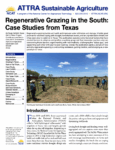
Regenerative Grazing in the South: Case Studies from Texas, Arkansas, Mississippi and Virginia
A multistate team lead by the National Center for Appropriate Technology developed the following series of rancher profiles as part of a larger project to promote regenerative grazing and soil health throughout the South. Case Studies from Texas This publication explains historical factors that have created barriers to adoption and profiles a working group and […]
Sustainable Strategies for Managing Bacterial Diseases and Improving Peach Tree Health
These videos were produced by Clemson University to share sustainable ways to improve tree health and control diseases in peach tree systems. Alternative Ways to Control Bacterial Diseases of Peaches Soil Amendments for Tree Health and Disease Reduction
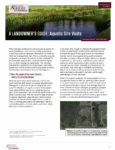
Aquatic Mammal Management on Agricultural Lands
These resources were created by Texas A&M AgriLife Extension to assist landowners in the sustainable management of ponds, wetlands and wildlife. This video addresses the control and management of problematic aquatic mammals, such as beavers and nutria, which can cause significant damage to aquatic ecosystems and infrastructure. It covers effective strategies and best practices for […]
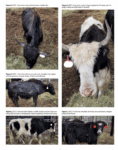
Yak Meat Production Enterprise Budgets
Instructions: Enterprise Budget Worksheet for Yak Meat Production This guide offers instructions for using the Enterprise Budget Worksheet for Yak Meat Production, below. Excel tool: Enterprise Budget Worksheet for Yak Meat Production This decision tool is targeted for those interested in raising yaks for meat production. The goal is to assist individuals in accounting for […]
Desinfestación Anaeróbica del Suelo para Mejorar la Salud de las Plantas de Tomate
Esta publicación explica cómo utilizar la desinfestación anaeróbica del suelo para el manejo de plagas en tomates. Also available in English.
Anaerobic Soil Disinfestation to Advance Tomato Plant Health
This NC State fact sheet discusses the use of anaerobic soil disinfestation (ASD), also known as biological soil disinfestation (BSD), for managing several soil-borne pathogens, plant-parasitic nematodes, and weeds in vegetable and fruit crops. También disponible en español.
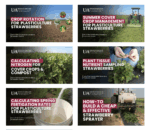
Sustainable Strawberry Production Video Series
The videos on this page were developed by the University of Arkansas as part of a training program to help Extension and Natural Resource Conservation Service (NRCS) agents share information with strawberry growers about sustainable practices. The videos plus additional information about the training program are also available at the University of Arkansas Sustainable Practices […]
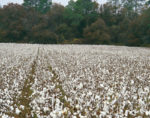
Sustainable Upland Cotton Production
This project developed a set of 12 video training tools to enhance skills and knowledge about sustainable cotton production for Cooperative Extension agents. The 12 videos are listed below. They were created by a team from Texas A&M University, Louisiana State University, and Oklahoma State University. Cotton Growth and Development Beltwide Seed Quality Survey Basic Soil […]
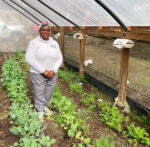
Pest Exclusion Systems for Pest Management in Vegetable Production Across the Southeast
In organic vegetable production, and in situations where farmers are seeking to reduce chemical applications, Integrated Pest Management (IPM) strategies are recommended to exclude pests in both opens fields and in high tunnels. The principles of pest exclusion involve separating the insect pest from the host plant and protecting the crop at a specific growth stage. Careful planning of both materials selected and management design are important to keeping pests out of a cash crop. This bulletin provides data and information from on-farm demonstrations on the use of pest exclusion systems. Pest exclusion systems use shade cloths as a barrier around high tunnels, low tunnels and hoop houses to exclude insect pests.

Organic Control of White Mold in High Tunnels
The fungus Sclerotinia sclerotiorum infects many of the cool-season crops produced in Kentucky. This SARE-funded video presents information on the high tunnel production system most commonly used in Kentucky; the disease cycle of S. sclerotiorum; and two control tactics compatible with national organic standards, solarization and biofumigation.
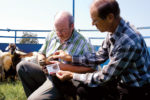
FAMACHA
FAMACHA is a diagnostic tool to help farmers identify parasite infection in small ruminants, allowing them to cut the cost of deworming agents by targeting treatments only to infected animals. Training is required before purchase.
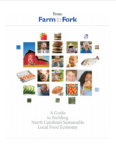
Farm to Fork in North Carolina
This guide provides key action ideas for building a sustainable food economy in North Carolina.
Mount Pleasant Local Food and Farm Assessment
Download the Mount Pleasant Local Food and Farm Assessment. The Town of Mount Pleasant Planning and Development Department and Appalachian Sustainable Agriculture Project (ASAP) collaborated to assess the needs and opportunities in Mount Pleasant, S.C. associated with developing a regional food system. To complete this assessment, they used qualitative and quantitative data on the region’s agricultural […]

Private Landowners Guide to Forest Certification in the South
"Private Landowners' Guide to Forest Certification in the South," developed by the LSU Ag Center and Mississippi State University Extension, helps forest landowners understand forest certification.
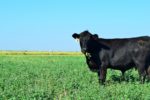
The Performance of Cover Crops in Minimally Tilled Forage-based Grazing Systems
In a Southern SARE-funded Graduate Student Grant (GS15-152), “Evaluation of Winter Annual Cover Crops Under Multiple Residue Management: Impacts on land management, soil water depletion, and cash crop productivity,” Texas Tech University researchers investigated five cover crops species as potential complements to a warm-season beef-stocker grazing system. The impact of the project was two-fold: Stabilize the soil surface from excessive wind erosion and desiccation; and strengthen rural communities by ensuring the persistence of profitable agriculture in the region.
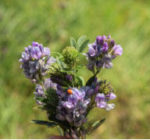
Integrating Legumes with Grass to Improve Forage-Livestock Systems
In a Southern SARE-funded Research and Education Grant (LS14-261), "Long-term Agroecosystems Research and Adoption in the Texas Southern High Plains -- Phase III," Texas Tech University researchers conducted a steer grazing trial comparing a grass only system to a grass-legume system for animal productivity and water use efficiency.
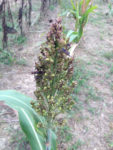
Innovations in Large-Scale Trap Cropping for Reducing Insect Pests
Trap cropping is a unique pest prevention system that uses insect behavior to deter pest feeding. Benefits of trap cropping not only include effective pest management, but trap crops can also increase biodiversity, conserve natural enemies and reduce wind damage to main crops.

What Can Be: Regional Food Systems
This video outlines the economic redevelopment project of Working Landscapes in Warrenton, North Carolina, telling the story of two rural leaders who moved home to Warren County to contribute to their local economy by building a small processing center.